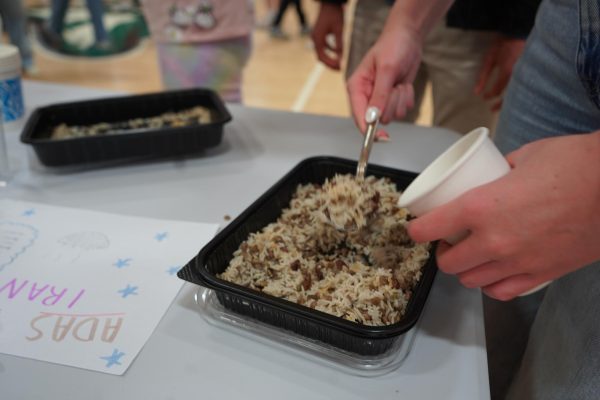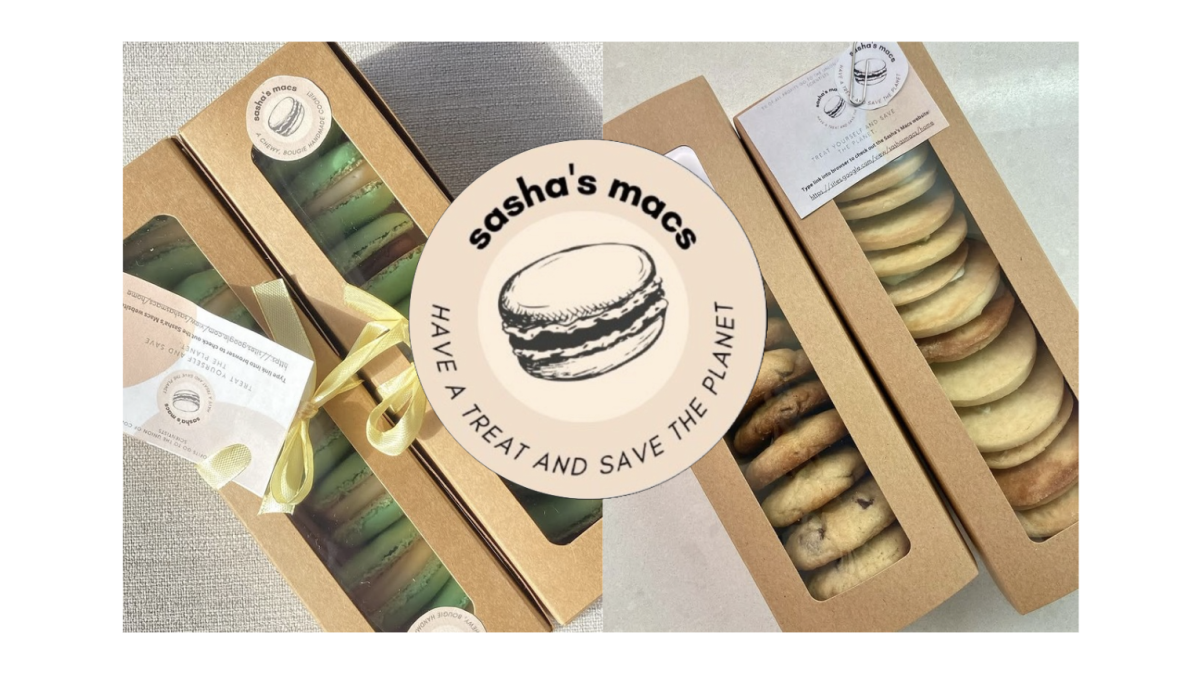Some lunches require you to follow stuffy, dense lines of students that seep out of the cafeteria. But other days are special: all you have to do is follow the mingling aromas of chilli, garam masala, and olive oil that waft out of the big gym. And behold: tables of enticing dishes from around the world invite you to taste test.
Leadership invited students and student unions to demonstrate their cultural cuisines at the Cultural Food Fair. On Apr. 10, students of all grades visited the big gym during lunch to sample the diverse spread of foods their classmates offered. The co-director of Leadership’s Equity and Curriculum Commission, junior Naisha Khali spearheaded the event with her commission. “We really wanted to create an event that highlighted and celebrated various cuisines,” Khali said. “We worked alongside student unions and invited the student body to participate in representing the different cultures of our Miramonte students!”
One such student union was the South Asian Student Union, whose presidents, seniors Sana Anand and Asher Patel, brought a variety of South Asian snacks. “I wanted to contribute to the food fair because I feel that there are a lot of misconceptions about Indian food,” Anand said. “It’s really good, but it’s also very different depending on where in India you are. For example, in south India, there are very good dosas whereas in north India you can find great chole bhatura. I want to encourage people to see and explore all the foods that Indian cuisine has to offer.”
Anand and Patel dished out mango ice cream as a substitute for mango kulfi, a traditional Indian ice cream. “Mango kulfi is a uniquely universal dish to India,” Anand said. “And, it’s a perfect snack in the summer after dinner when it’s hot out.” The ice cream was served alongside Indian coconut cookies, as well as khari masala, a form of spiced biscuit pastry, and samosas, fried pastries with a savory filling, typically of mixed spiced vegetables.


Meanwhile, to showcase Greek cuisine, junior Sofia Paraskaki and sophomore Maya Paraskaki served students a colorful Greek salad. “Greek Salad in Greece is called horiatiki, or Villager’s Salad. It’s enjoyed all year long but mostly during the summer months when tomatoes are sweet and cucumbers are tasty,” Paraskaki said. Paraskaki noted that, contrary to some popular representations, “Greek salad has no lettuce or vinegar. It’s comprised essentially of tomatoes, cucumbers, bell peppers, red onions, olives and/or capers, oregano, and extra virgin olive oil.” The salad was accompanied by a decadent spinach pie, or spanakopita, a fyllo-based pastry filled with a mix of eggs, feta, onions, spinach, and other greens.

When Paraskaki found out about the fair, she was eager to share her cultural cuisine with the student body. “Even though the Bay Area has many different cuisines, I feel that true Greek cuisine is not necessarily that well known,” Paraskaki said. Paraskaki explained that its origins are complex and rich, as “it stems from Ancient and Byzantine times but also incorporates Turkish, Balkan and Italian influences.” With this rich background in mind, Paraskaki and her sister presented the historically and culturally rich salad and spinach pie of their Greek culture in order “to share some of [their] traditions with our classmates at Miramonte.”
Furthermore, Latinos Unidos officers along with teacher advisor Megan Flores provided chicharrones de harina, a Mexican puffed wheat snack in the shape of a wheel, with a complement of Valentina: a Mexican hot sauce that uniquely combines acidic and smoky flavors. The tangy, spicy, crunchy bite gave students a glimpse into the world of Mexican snacks. “I am really happy that it turned out so well, and we got to share food and learn about other cultures as well,” Latinos Unidos co-President Vania Robles Salcedo said. “The event was an important way to continue to celebrate the Latino culture in a community that is predominantly not Latino.”

Robles expressed hope that students will seek future opportunities to try other foods boasted by the vast, nuanced array of cuisines within the umbrella of Latin American culture. Reflecting on her own cultural cuisine, Peruvian, Robles Salcedo “would recommend everyone try Ceviche, Peruvian Tequeños, and Suspiro a la Limeña,” explaining that “they are three of my favorite foods to eat when visiting Peru.”
While the food fair gave students an opportunity to glimpse a number of staple foods from around the world, there remain a plethora of cuisines to try. “Food can show a lot about our cultures, and traditional meals are very unique according to each country, so tasting and trying different plates is an essential part of getting to know a new culture,” Robles Salcedo said.


While most booths supplied meals, desserts, or snacks, junior Zoe Zimmerman’s stand boasted packs of ramune, a Japanese soft drink, in its strawberry, melon, and original flavors, and created informational pamphlets about Japanese cuisine. In the pamphlets, Zimmerman explained that ramune, named after lemonade, is regarded as Japan’s national soda. The pamphlets also included information about the origins of ramen and sushi and a QR code to an online Japanese cuisine guide.

“I hope that people can come to understand the complex history that is behind every meal,” Zimmerman said, “and that students at Miramonte continue to take interest in the backgrounds of others.”









